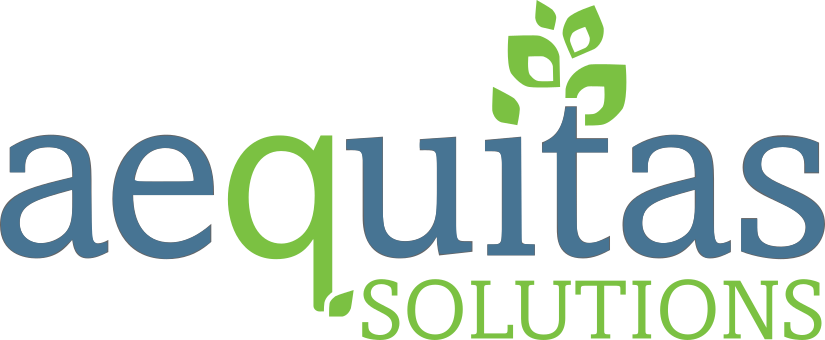Implementing a new Student Information System (SIS) is a major undertaking. The right SIS can streamline daily school operations, from enrollment to grading, attendance, and state compliance. But before your district can benefit from a new SIS, there’s a critical challenge to navigate: migrating your district’s data.
Whether your district is moving on from a prior SIS or consolidating multiple third-party EdTech systems into one SIS platform, your student data needs to be handled with care. That includes cleaning it up to conform to your new product’s data layout(s), transferring it securely, and ensuring it works correctly in your new environment. While the technical aspects may fall under your IT team’s scope, the reality is that data migration will impact and should be verified by any department that will use the new product.
To help your team navigate this transition smoothly, we’ve compiled 10 actionable tips to manage your data during an SIS implementation.
1. Start with a Thorough Data Audit
Before you move any data, take stock of what you have. A data audit is your chance to get a clear picture of what lives in your current systems—student records, attendance logs, historical grades, program codes, and more.
This step also reveals where data practices may differ between schools or departments. For example, one school might enter special education codes differently than another, which could lead to confusion in the new system. Identifying these variations early allows your team to create consistency in your go-forward data, ensuring that you have a clean foundation of data in your new SIS.
2. Prioritize What to Move
It’s tempting to move everything over at once, but not all data needs to be migrated on day one. Focus first on what’s essential for daily operations and compliance: active student records, schedules, enrollment data, and current staff assignments.
Consider developing a phased migration schedule based on district needs. For example, move high-priority data before the new school year starts, then follow with historical transcripts or legacy discipline records during the fall or winter. This staggered approach gives your team time to verify each data set without feeling rushed, and it minimizes disruptions to daily operations.
3. Assign Clear Roles and Responsibilities
Successful data management isn’t a one-person job. Assign a data migration team with representatives from IT, data, student services, and school sites. Define each person’s role early—who is cleaning data, who’s validating uploads, and who’s approving final outputs prior to your SIS implementation?
Clear roles also help your team respond quickly when questions arise. For instance, if a counselor notices something off with student schedules in the new system, they should know exactly who to contact for a fix. Having defined points of contact for each area helps keep communication flowing and reduces the chance of issues falling through the cracks.
4. Clean and Standardize Data
Once you know what’s moving, take time to clean it up. That means:
- Fixing inconsistent data labels or descriptions, such as grade level: (e.g., “K,” “Kinder,” “Kindergarten”)
- Removing duplicate students or staff entries
- Ensuring all required fields are filled
If possible, use built-in validation tools to scan for errors before the data is migrated. Many SIS platforms can flag common issues such as missing birthdates, incorrect grade codes, or mismatched student IDs. Addressing these issues before migration saves time and prevents errors from becoming embedded in your new system.
5. Back Up Your Data (Twice)
This one’s simple but vital. Always create a full backup before you start making changes or migrating data. Store your backup in a secure location, and for added protection, create a secondary backup elsewhere, just in case.
Even if your migration plan goes perfectly, having a backup provides peace of mind. You may need to reference old system logic, restore a historical report, or verify audit trail data months later. A reliable backup strategy ensures that, regardless of what happens, your district is protected from data loss or oversights.
6. Build a Step-by-Step Migration Plan
Think of your data migration like a flight plan—it needs a clear route, timeline, and checkpoints. Start by breaking down each data category (e.g., enrollment, grades, attendance) and mapping out when and how each will be moved.
This plan should also include contingency steps. What happens if a migration fails or a dataset doesn’t match expectations? Building in time for revisions, second passes, or reruns helps you stay flexible without delaying the entire project. The more detailed your plan, the smoother your implementation will go.
7. Validate and Test Along the Way
Before you flip the switch on your new SIS, test everything. Run small-scale migrations first, especially with complex or high-volume data. Make sure information lands in the right fields, shows up in reports as expected, and follows your formatting rules.
Ask end-users to help validate the accuracy of the migrated data. You can also use test accounts to simulate different user perspectives, like secretaries updating attendance, administrators pulling reports, and teachers accessing rosters. These real-world use cases can highlight functionality gaps or data display issues that may not be apparent in a static data review.
8. Protect Student Data at Every Step
During implementation, your data will be in transit more than usual, which makes security especially important. Make sure all files are encrypted and shared only through secure channels. Limit who has access to sensitive records and ensure that any third parties involved follow the same data protection standards your district does.
Create an internal checklist of security practices to follow throughout the implementation process. This list can include guidelines like password-protecting export files, reviewing access logs, and verifying third-party compliance agreements. Taking these extra steps now builds trust with your community and ensures your SIS is compliant from day one.
9. Document Processes and Learnings
As your team works through the implementation, document as much as possible—what data was migrated, what formatting rules were used, and what challenges came up.
Documentation is especially helpful if your district staff changes. Years from now, when someone needs to understand why certain historical data looks a certain way or which fields were excluded from the original import, your documentation will provide clarity. It also makes it easier to replicate success in future system upgrades or transitions.
10. Train Staff to Maintain Data Quality
Your SIS is only as good as the data that goes into it. Once the new system is live, ensure that staff are trained not only on how to use it, but how to keep data clean.
Consider incorporating brief, role-specific training modules that staff can reference anytime. For example, attendance clerks might benefit from a quick guide on how to properly enter tardies, while counselors may need support with course coding. When training is accessible and aligned with daily tasks, staff are more likely to follow procedures and enter accurate, consistent data.
Paving the Way for Long-Term SIS Success
Implementing a new SIS is more than a one-time data transfer. It’s a long-term investment in your district’s operations, compliance, and student success. That’s why managing your data carefully during this transition is so important. It sets the foundation for everything that follows, from smoother reporting to better decision-making.
Think of it like building a house. If the data foundation isn’t strong, even the best system features can’t function as intended. With thoughtful planning, cross-team coordination, and a commitment to clean data practices, your district can position itself for long-term success.
Set Your District Up for Success
Whether you’re mid-implementation or planning ahead, the way your district manages its data makes all the difference. If you’re already in the process of switching systems, you’re likely looking for more than just new software, you’re looking for a system that supports your team and grows with your district.
That’s exactly what we’ve built with Q, our Student Information System. Q is a comprehensive SIS suite designed to improve data accuracy, support every department, and ensure the success of every student.
If you’re looking for a new SIS, we encourage you to explore how Q can complement your goals, whether it’s through smoother data workflows, easier compliance, or better training tools.


